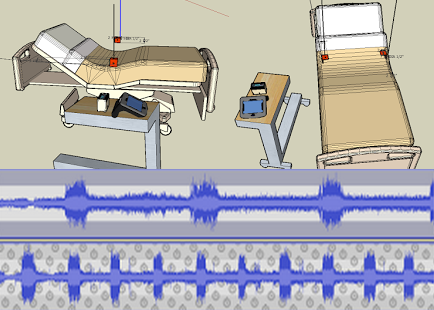
[Eswar] is not an ordinary 16 years old boy. He figured out a noninvasive way to measure breathing in hospitals for less than $50. He is using a theremin to measure the rise and fall of a patient’s chest. For our curious readers, this touch-less instrument was invented back in 1929 by the Russian inventor [Leon Theremin]. It uses the heterodyne principle and two oscillators to generate an audio signal. One electronic oscillator creates an inaudible high pitch tone while another variable oscillator is changed by adding capacitance to an antenna.
As you can guess the space between the patient’s chest and the antennas placed around the bed forms a tiny capacitor which varies when exhaling. With three simple TTL chips and a little guessing [Eswar] had a working prototype ready to be implemented in the real world.
via Hack a Day





